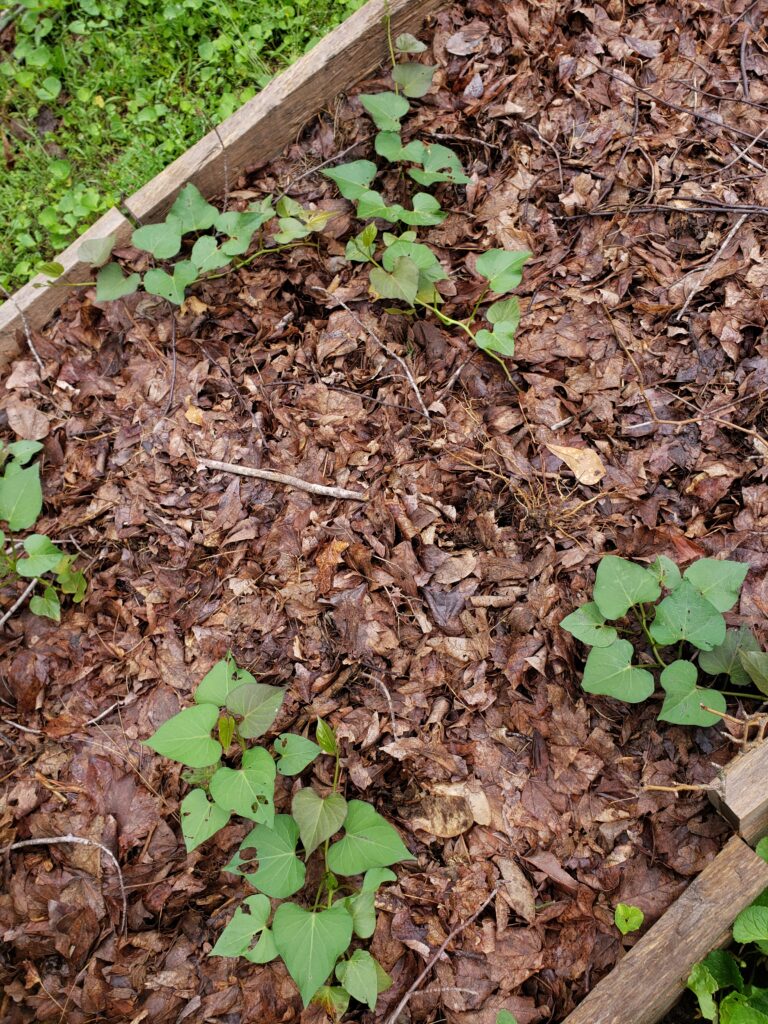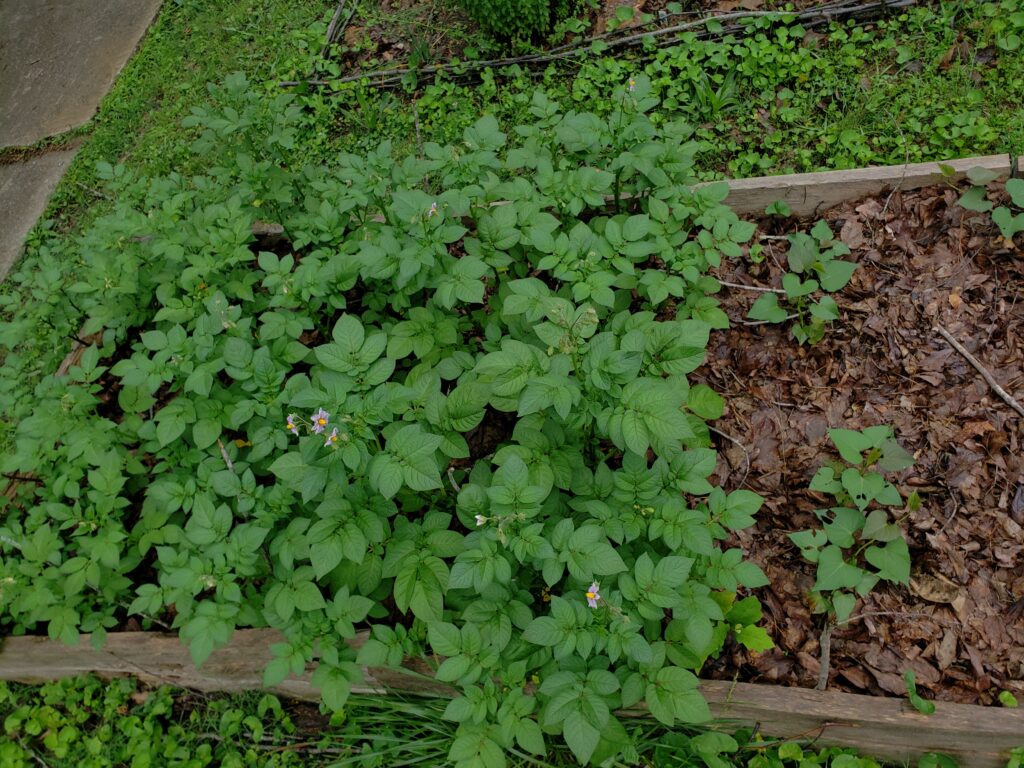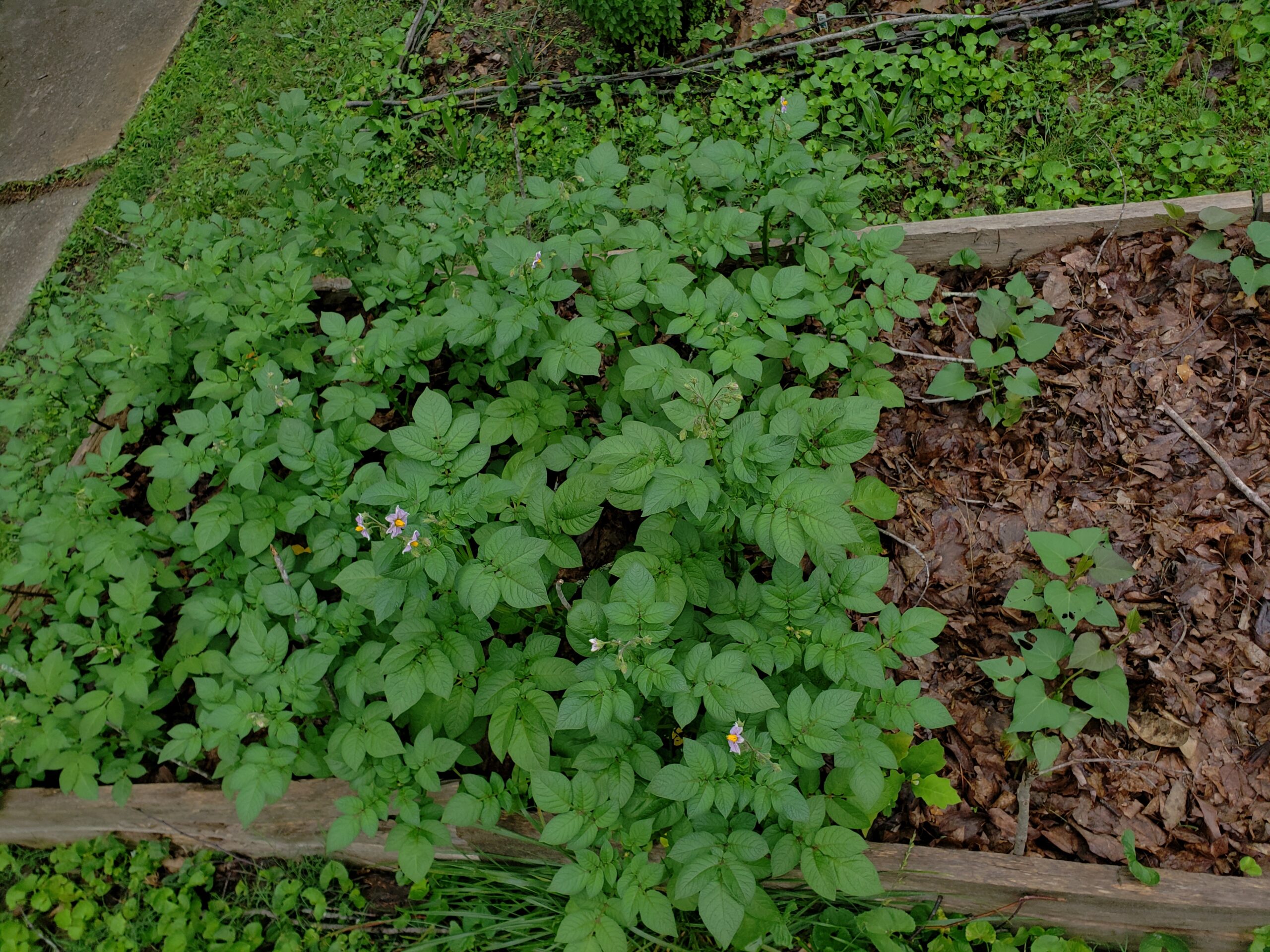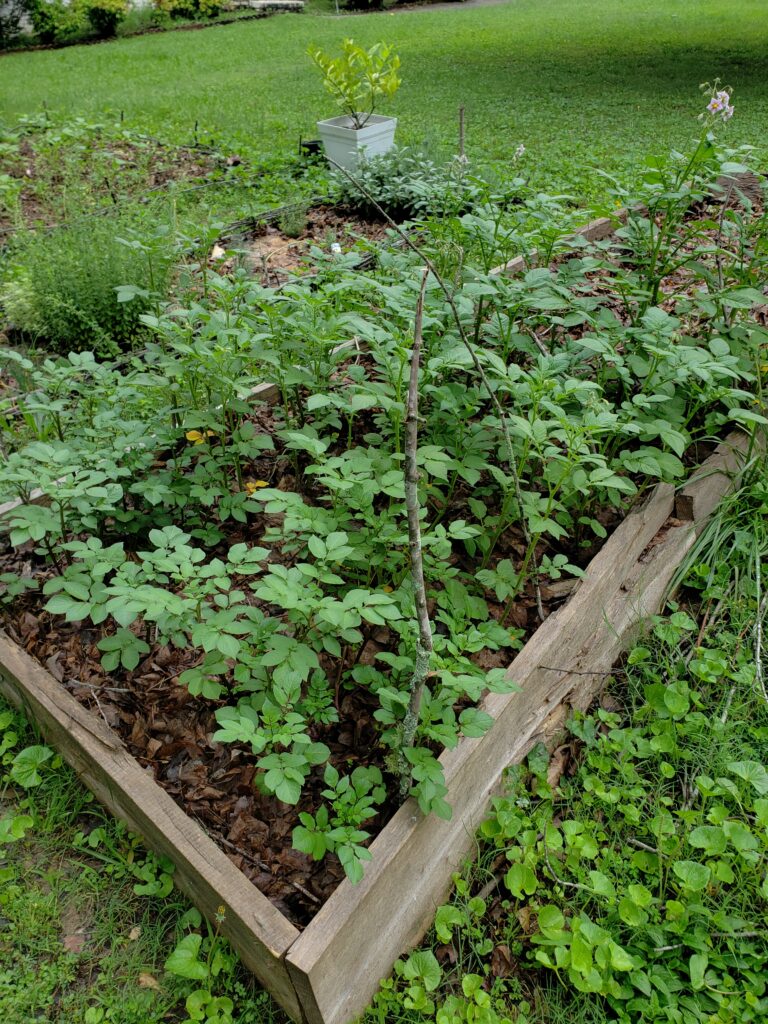Growing potatoes in a raised bed filled with leaf mulch is an excellent way to produce a bountiful harvest with minimal effort. Using leaf mulch as the growing medium not only provides a rich, organic environment for your potatoes but also helps retain moisture, suppress weeds, and improve soil structure. In this post, we’ll walk you through the process of growing potatoes in a raised bed with leaf mulch, sharing tips and insights from our own successful experience.
Preparing the Raised Bed
- Build the Raised Bed: Construct a raised bed using untreated wood or other suitable materials. A depth of at least 12 inches is recommended to allow ample room for the potatoes to grow.
- Add Leaf Mulch: Fill the raised bed with a thick layer of leaf mulch. You can use leaves collected from your yard or sourced from neighbors and local parks. Shred the leaves if possible to speed up decomposition and create a more uniform mulch layer.

Caring for Your Potato Plants
Harvesting Potatoes
- Timing: Potatoes are typically ready to harvest about 10-12 weeks after planting for new potatoes or 15-20 weeks for mature potatoes. Look for signs such as yellowing and die-back of the foliage.
- Harvesting Technique: Carefully dig into the leaf mulch with your hands or a garden fork to locate the potatoes. Gently remove the potatoes, being careful not to damage them.
- Curing and Storing: After harvesting, let the potatoes cure in a cool, dark, and well-ventilated place for a few days to toughen their skins. Store them in a cool, dark, and dry location for long-term use.

Benefits of Growing Potatoes in Leaf Mulch
- Ease of Harvesting: Harvesting potatoes from a leaf mulch bed is easier than from traditional soil, as the mulch is loose and easy to dig through.
- Sustainable Gardening: Using leaf mulch recycles organic material that would otherwise go to waste, making your gardening practices more sustainable.
Conclusion
Growing potatoes in a raised bed filled with leaf mulch is a rewarding and efficient way to produce a healthy crop of potatoes. The benefits of leaf mulch, combined with the ease of planting and harvesting in a raised bed, make this method a favorite among gardeners. With proper care and attention, you’ll enjoy a bountiful harvest of delicious potatoes.
Happy gardening!








